The more we know about the way our bodies work, the more empowered we can become.
-
Tracking cycle
-
Getting pregnant
-
Pregnancy
-
Help Center
-
Flo for Partners
-
Anonymous Mode
-
Flo app reviews
-
Flo Premium New
-
Secret Chats New
-
Symptom Checker New
-
Your cycle
-
Health 360°
-
Getting pregnant
-
Pregnancy
-
Being a mom
-
LGBTQ+
-
Quizzes
-
Ovulation calculator
-
hCG calculator
-
Pregnancy test calculator
-
Menstrual cycle calculator
-
Period calculator
-
Implantation calculator
-
Pregnancy weeks to months calculator
-
Pregnancy due date calculator
-
IVF and FET due date calculator
-
Due date calculator by ultrasound
-
Medical Affairs
-
Science & Research
-
Pass It On Project New
-
Privacy Portal
-
Press Center
-
Flo Accuracy
-
Careers
-
Contact Us
22 period facts you might not have heard in health class
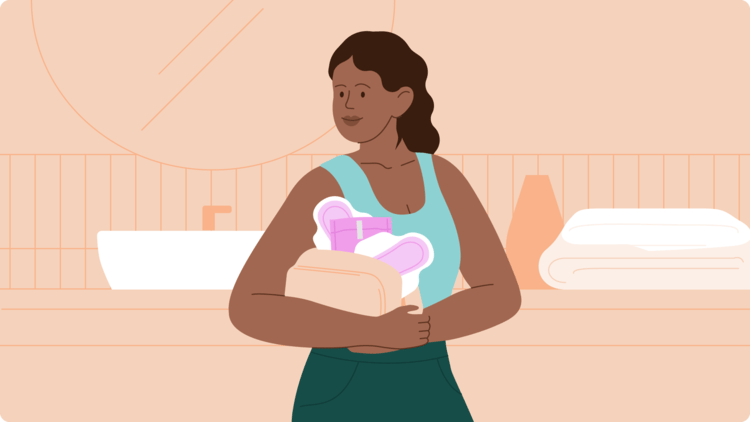

Every piece of content at Flo Health adheres to the highest editorial standards for language, style, and medical accuracy. To learn what we do to deliver the best health and lifestyle insights to you, check out our content review principles.
Periods are often regarded as a taboo topic, but why?
Dr. Sameena Rahman, obstetrician and gynecologist, US, says, “I realized how little these areas, from the menstrual cycle through to menopause, were being discussed. But these are natural processes. We should be able to discuss them!”
It’s time to break the stigma and talk openly about periods. These period facts, from a range of different studies and publications, highlight the impact menstrual cycles have on our lives, from common symptoms to surprising trends. Keep reading to learn more and feel empowered about your understanding of menstrual cycles.
Menstrual cycle facts
We all experience our menstrual cycle in different ways. What’s considered normal for one of us may be unusual for another. For example, how long our cycles (and periods last) and the symptoms we experience are pretty personal to each of us.
However, it helps to know what’s common and what’s not when it comes to our cycles. That way you can spot when something might be up and book a checkup with your doctor. With that in mind, here are some common cycle facts:
- On average, our periods start when we’re around 13 years old and end when we’re around 51 years old, with a period every 28 days, lasting from two to seven days. This adds up to approximately 38 years of monthly menstruation or about 456 periods over the course of our lifetime.
- A menstrual cycle may be considered irregular by a doctor if the difference between the longest and shortest cycle is greater than seven days at least twice in 12 months. This classification helps rule out the occasionally short or long cycles that many of us experience.
- In a study of Flo users, women between 18 and 25 years old experienced the longest average period length — at 5.2 days — while 41-to-45-year-olds experienced the shortest average period length at 5.06 days.
- A Flo study found that issues related to the menstrual cycle, like mood and physical symptoms, can negatively impact quality of life and career progression.
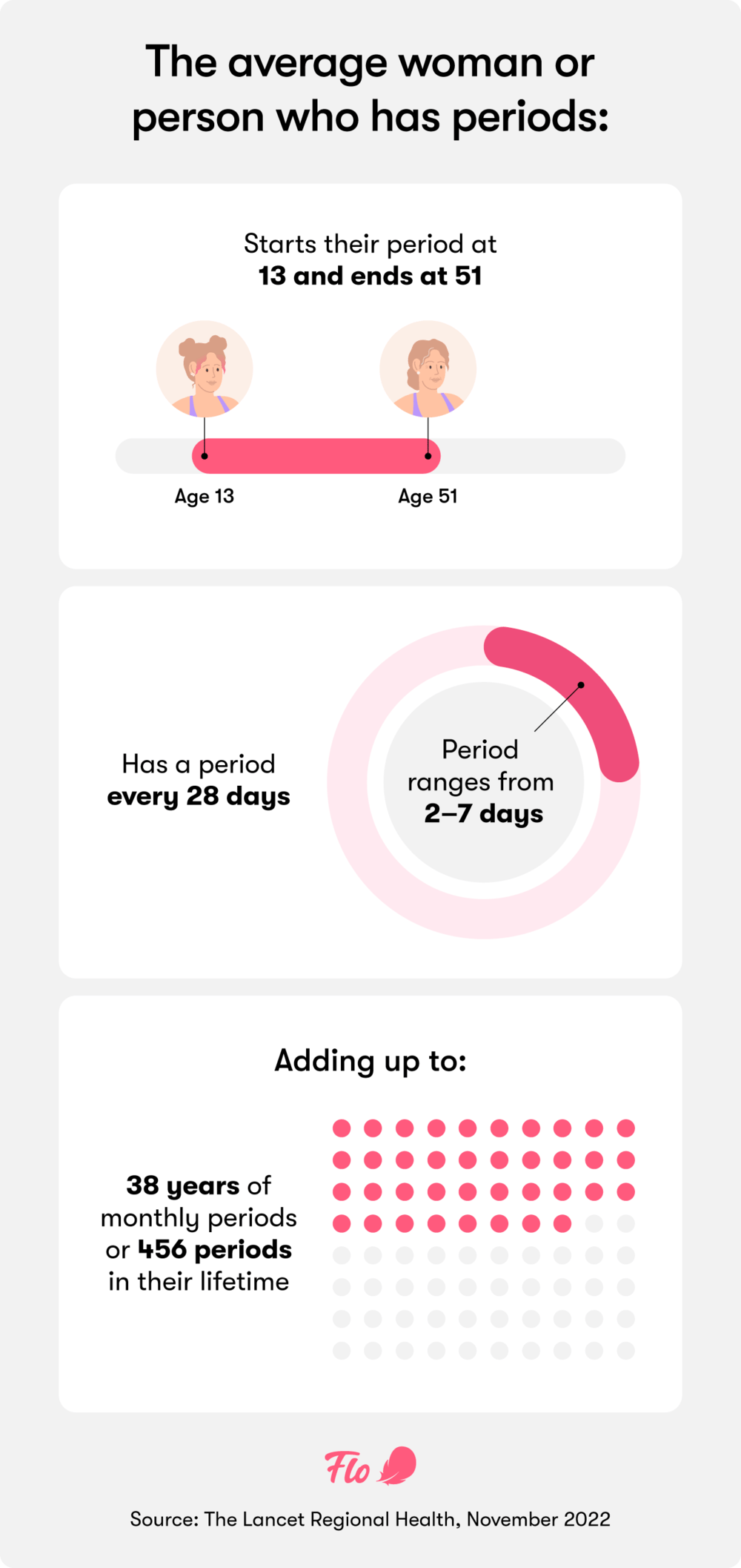
Facts about menstrual symptoms
The way we experience our menstrual cycle varies greatly, not only from person to person but over the course of our lifetimes. Cramps, headaches, mood swings, you name it — someone, somewhere, has probably experienced it. Here’s an overview of some common menstrual symptoms:
- Premenstrual syndrome (PMS) affects 20% to 32% of premenopausal women.⁵ This includes both physical and psychological symptoms like bloating, fatigue, and anxiety.
- According to a study from Flo, app members most commonly report breast tenderness in their teen years, with more severe breast tenderness in their late 30s and early 40s.
- A Flo study found that across all age groups, Flo members report cramps as the most common menstrual symptom.
- The three most commonly reported period symptoms by Flo members who report loss of workplace productivity were cramps (91%), fatigue (85%), and bloating (81%).
- A Flo study found that 77.2% of women report that their menstrual cycle has a moderate to severe negative impact on their ability to concentrate.
- About 89% of women from a Flo study report that their menstrual cycle has a moderate to severe negative impact on their energy levels.
Speak to your doctor if your premenstrual or menstrual symptoms are impacting your quality of life. They’ll be able to offer help and support, plus walk you through treatment options.
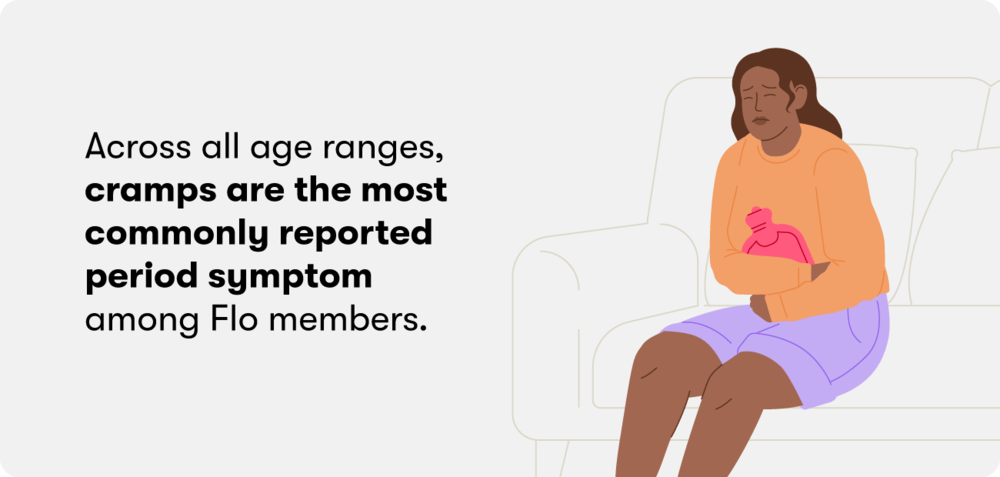
Period poverty facts
Not everyone has the same access to period products. Whether it’s because of availability or affordability, period poverty — defined as a lack of access to products and services or education about menstrual cycles — can impact anyone, anywhere.
Here are some period poverty statistics that shine a light on the issue:
- In a study of 30 countries, it was estimated that approximately only 2 out of 5 schools worldwide provide menstrual health education, and around 1 in 3 girls’ restrooms in schools have bins for used period products.
- Period products are taxed at an average of 11.2% across 57 countries and territories and 78 states (states located within the United States and Brazil).
- Approximately 1 in 4 US women aged 13 to 19 can’t access the period products they need due to costs.
- Because of a lack of access to period products, approximately 40% of US teens wear period products longer than recommended.
These statistics paint a compelling picture of the global challenges surrounding menstrual health, highlighting the urgent need for increased access to education, products, and supportive infrastructure. Learn about what Flo’s doing to help through the Pass It On Project.
Facts about period products
The choice of which period product to use is extremely personal to each of us. From tampons, period underwear, pads, and menstrual cups to free bleeding, there are numerous options available with unique considerations. Here are some key facts about different period products:
- For those of us who use disposable period products, it’s estimated that we will use more than 10,000 period products in our lifetime.
- How long can you keep a pad on? For optimal hygiene, it’s recommended that you change pads every few hours, even if your flow is light.
- Period products should never be flushed down the toilet, as it’s bad for not only plumbing but the environment, too.
- Using a tampon properly means choosing the lowest absorbency for your flow and changing it every four to eight hours to help prevent toxic shock syndrome.
Period-tracking statistics
Your menstrual cycle is more than just your period. It influences your energy, mood, and overall health. Period-tracking apps help you decode this monthly pattern by charting your cycle, logging symptoms, and revealing trends over time.
See how tracking your menstrual cycle and symptoms can help you understand your body’s unique rhythms, manage symptoms proactively with accurate cycle tracking, and optimize your daily life with personalized predictions and cycle-based health information.
- Using period-tracking apps like Flo can help improve health literacy and awareness, health and well-being, and symptom burden from PMS and premenstrual dysphoric disorder.
- Nearly 89% of Flo members report that using the app improved how educated they feel about their overall cycle.
- Around 84% of Flo members reported a better understanding of whether their cycle was regular, 75.7% whether their cycle length was normal, and 58.4% whether it was normal to have certain symptoms during their cycle.
- Approximately 77% of surveyed Flo members reported that Flo helped them improve how they manage their menstrual symptoms, including bad mood and cramps.
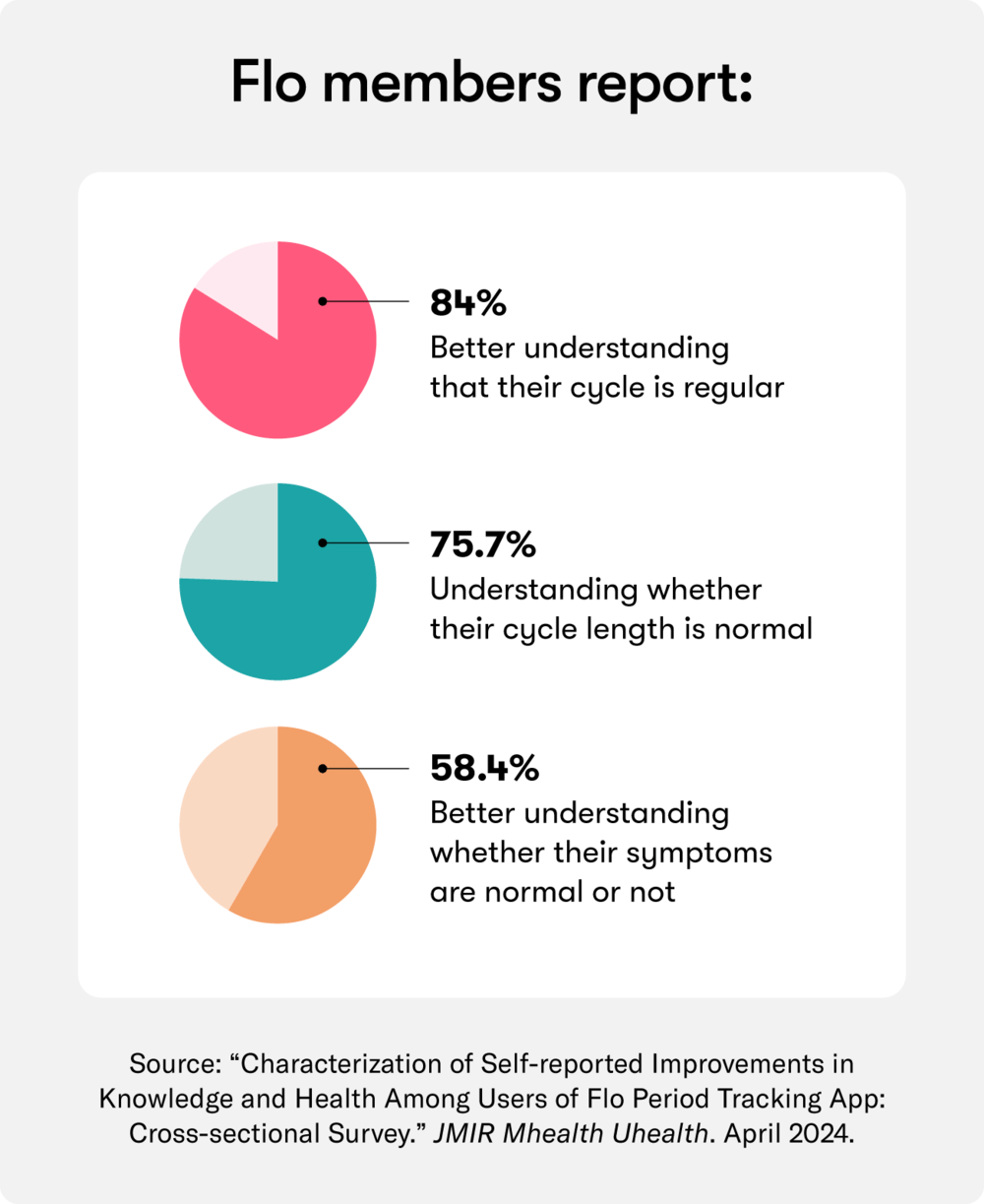
Trust Flo to help track your period
One thing is clear: Every period is different. These facts about periods show why it’s so important to take charge of your menstrual health, taking steps to understand your cycle, address symptoms, and maintain overall well-being.
Period-tracking apps can help you better understand your cycle and predict when your period may start, track symptoms effectively, and optimize your daily life based on your unique cycle.
Learn more about Flo’s cycle tracking and take control of your menstrual health today.
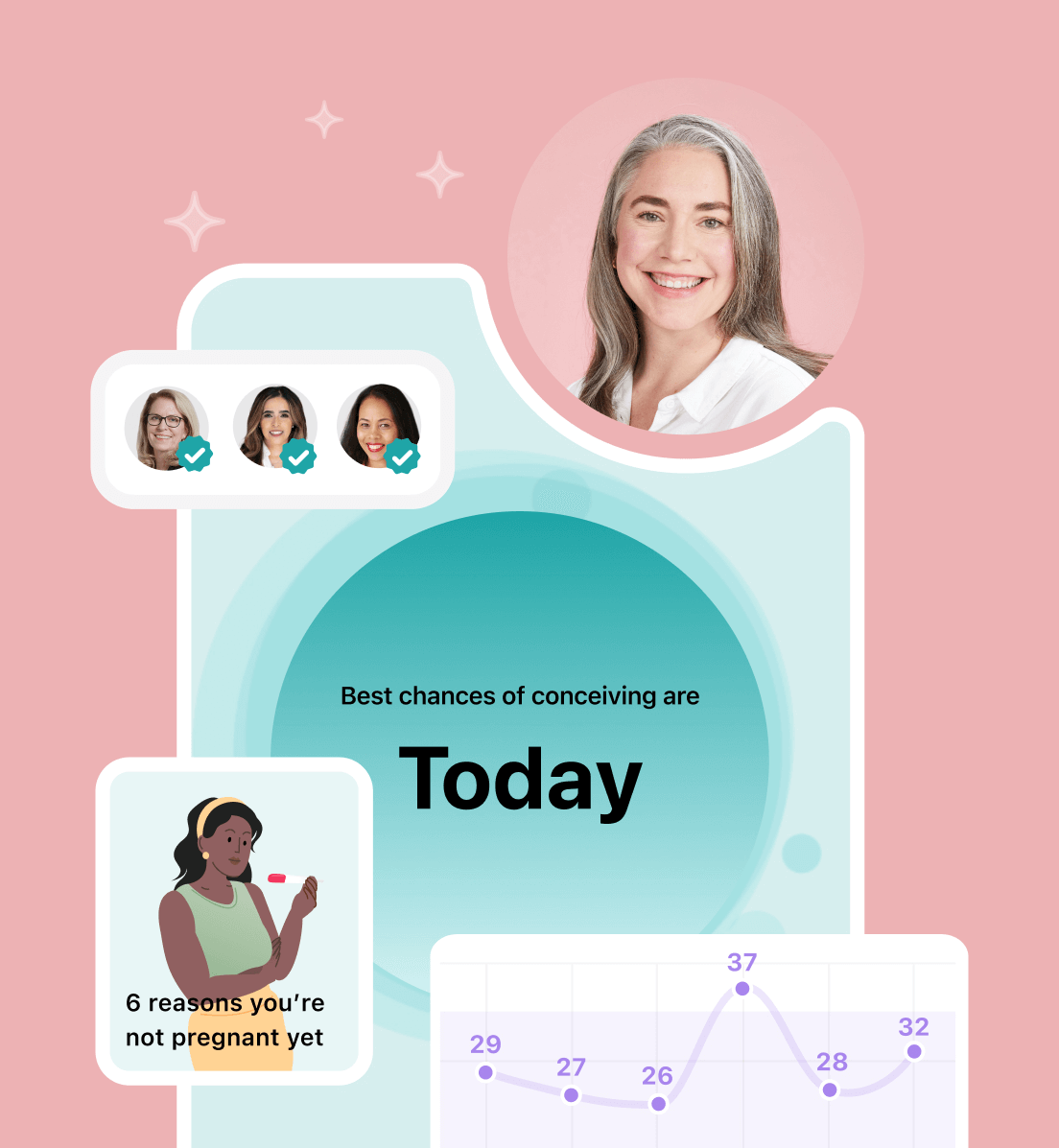
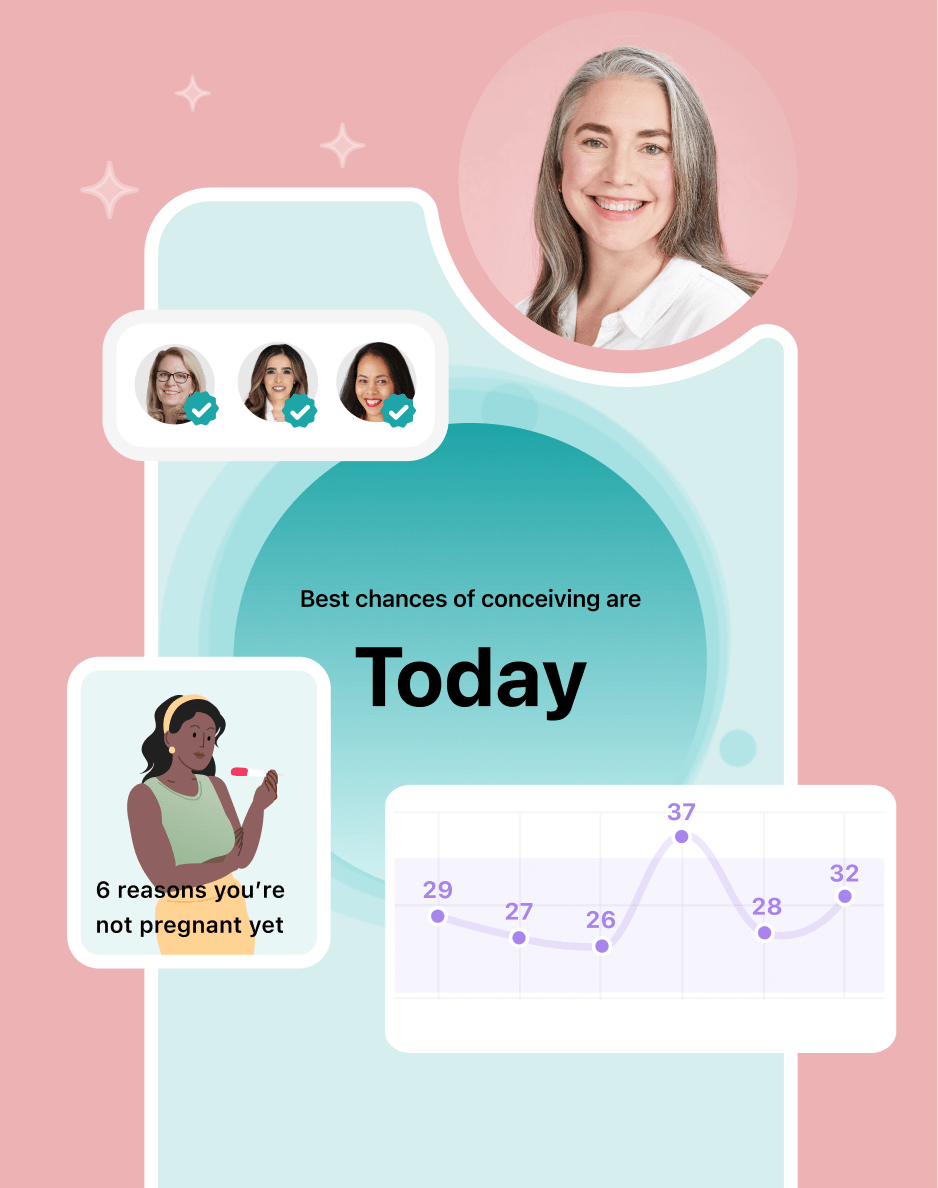
Hey, I'm Anique
I started using Flo app to track my period and ovulation because we wanted to have a baby.

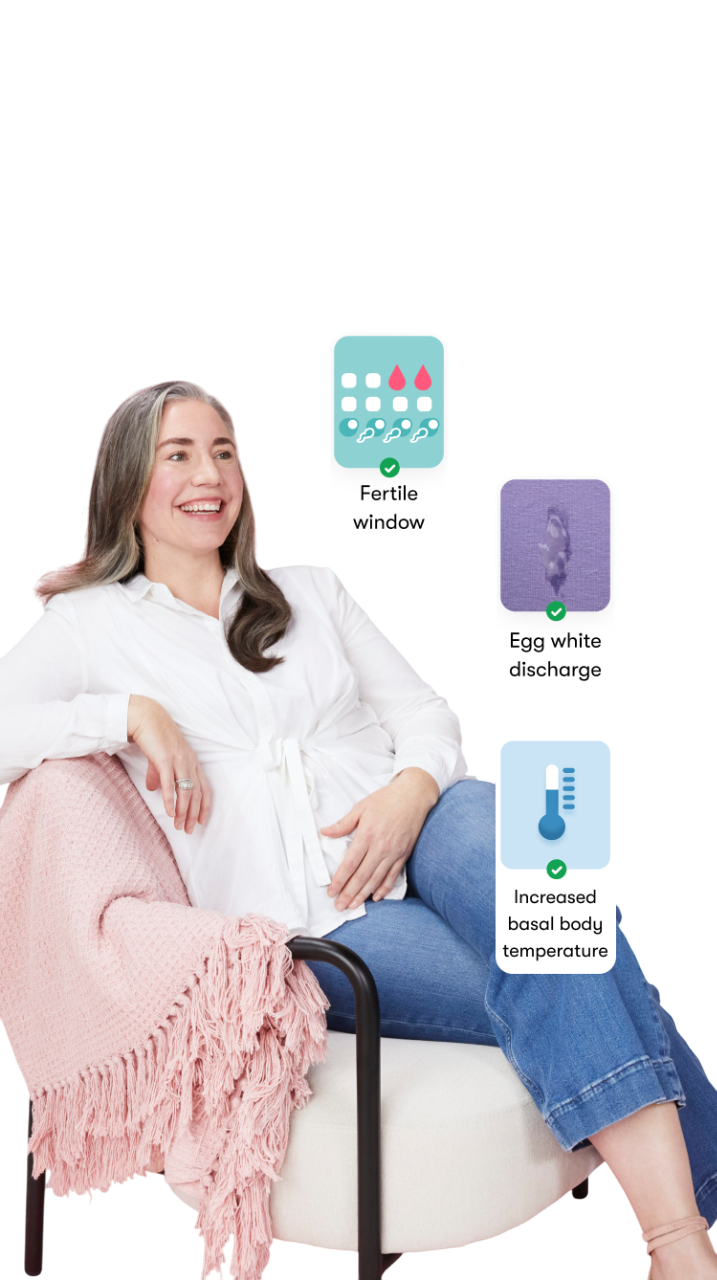
The Flo app helped me learn about my body and spot ovulation signs during our conception journey.
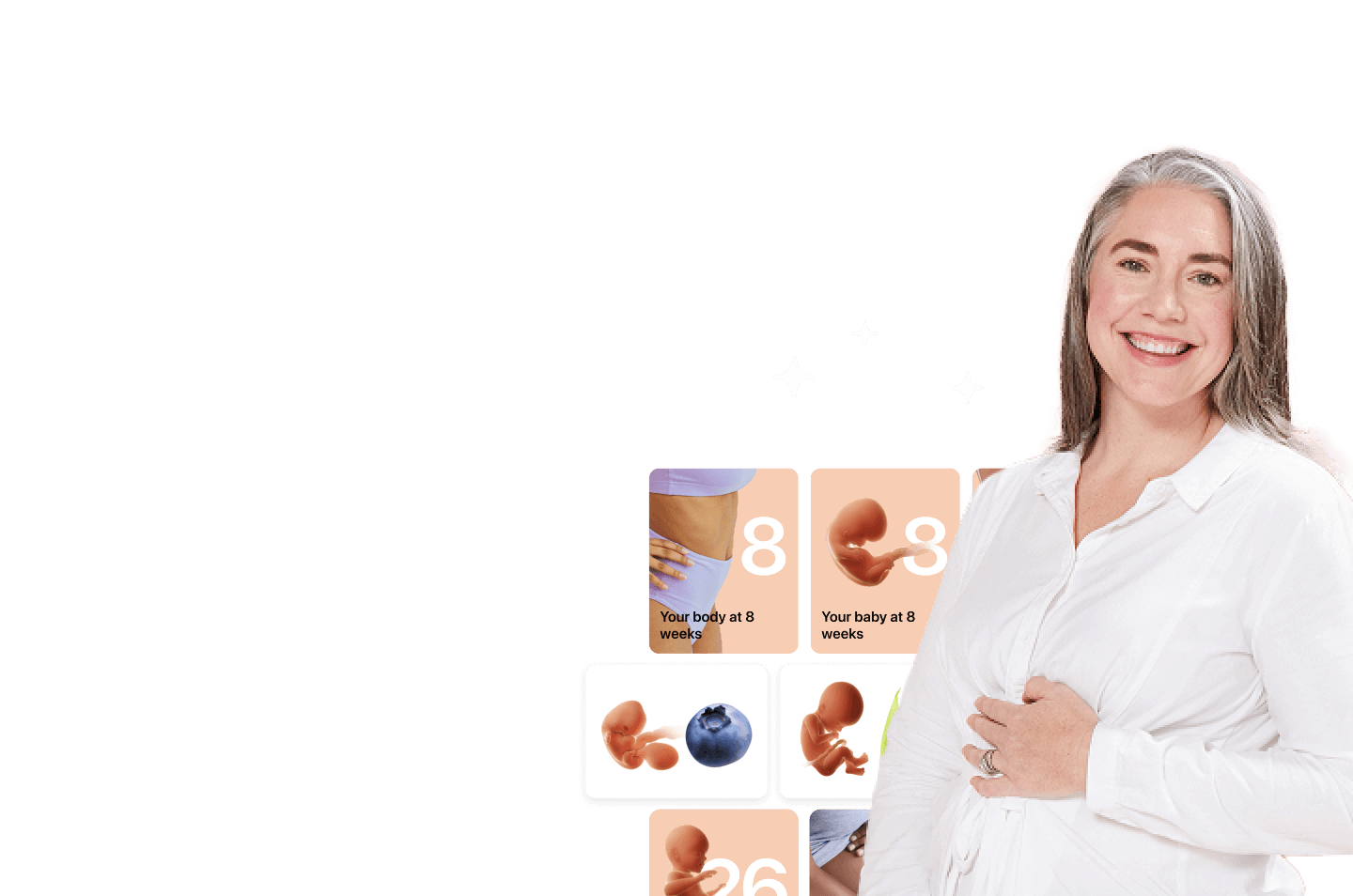

I vividly
remember the day
that we switched
Flo into
Pregnancy Mode — it was
such a special
moment.
Real stories, real results
Learn how the Flo app became an amazing cheerleader for us on our conception journey.
Sources
- “Menstrual Health: A Neglected Public Health Problem.” The Lancet Regional Health Americas, vol. 15, Nov. 2022, https://doi.org/10.1016/j.lana.2022.100399.
- Cunningham, Adam C., et al. “Chronicling Menstrual Cycle Patterns across the Reproductive Lifespan with Real-World Data.” Scientific Reports, vol. 14, no. 1, May 2024, https://doi.org/10.1038/s41598-024-60373-3.
- Ponzo, Sonia, et al. “Menstrual Cycle-Associated Symptoms and Workplace Productivity in US Employees: A Cross-Sectional Survey of Users of the Flo Mobile Phone App.” Digital Health, vol. 8, Jan. 2022, https://doi.org/10.1177/20552076221145852.
- Hantsoo, Liisa, et al. “Premenstrual Symptoms across the Lifespan in an International Sample: Data from a Mobile Application.” Archives of Women’s Mental Health, vol. 25, no. 5, Oct. 2022, pp. 903–10, https://doi.org/10.1007/s00737-022-01261-5.
- Biggs, W. S., and R. H. Demuth. “Premenstrual Syndrome and Premenstrual Dysphoric Disorder.” American Family Physician, vol. 84, no. 8, 2011, pp. 918–24, www.ncbi.nlm.nih.gov/pubmed/22010771.
- “Period Poverty: Why Millions of Girls and Women Cannot Afford Their Periods.” UN Women, 24 May 2024, www.unwomen.org/en/news-stories/explainer/2024/05/period-poverty-why-millions-of-girls-and-women-cannot-afford-their-periods.
- “Progress on Drinking Water, Sanitation and Hygiene in Schools 2015–2023.” World Health Organization, 2024, cdn.who.int/media/docs/default-source/wash-documents/jmp-wash-in-schools240525.pdf.
- Calderón-Villarreal, Alhelí. “Taxing Women’s Bodies: The State of Menstrual Product Taxes in the Americas.” The Lancet Regional Health Americas, vol. 29, Jan. 2024, https://doi.org/10.1016/j.lana.2023.100637.
- Elflein, John. “Percentage of Teenagers in the United States Who Struggled to Afford Feminine Hygiene Products as of 2023.” Statista, 14 May 2024, www.statista.com/statistics/1242985/us-period-poverty-teenage-students/.
- “Healthy Habits: Menstrual Hygiene.” Centers for Disease Control and Prevention, 7 May 2024, www.cdc.gov/hygiene/about/menstrual-hygiene.html.
- “Can You Flush Tampons?” Alliance for Period Supplies, 18 July 2024, allianceforperiodsupplies.org/can-you-flush-tampons/.
- Cunningham, Adam C., et al. “Efficacy of the Flo App in Improving Health Literacy, Menstrual and General Health, and Well-Being in Women: Pilot Randomized Controlled Trial.” JMIR mHealth and uHealth, vol. 12, May 2024, https://doi.org/10.2196/54124.
- Zhaunova, Liudmila, et al. “Characterization of Self-Reported Improvements in Knowledge and Health among Users of Flo Period Tracking App: Cross-Sectional Survey.” JMIR mHealth and uHealth, vol. 11, Apr. 2023, https://doi.org/10.2196/40427.
- “Heavy and Abnormal Periods.” The American College of Obstetricians and Gynecologists, Oct. 2020, www.acog.org/womens-health/faqs/heavy-and-abnormal-periods
- “Your Menstrual Cycle.” Office on Women’s Health, 13 Jan. 2025, womenshealth.gov/menstrual-cycle/your-menstrual-cycle.
- “The Menstrual Cycle and Mental Health.” American Psychiatric Association, 20 Dec. 2023, www.psychiatry.org/news-room/apa-blogs/the-menstrual-cycle-and-mental-health-concerns.
- Kvalem, Ingela Lundin, et al. “Menstrual Attitudes in Adult Women: A Cross-Sectional Study on the Association with Menstruation Factors, Contraceptive Use, Genital Self-Image, and Sexual Openness.” Women’s Health, vol. 20, Jan. 2024, https://doi.org/10.1177/17455057241249553.
- “Menstrual Cycle: What’s Normal, What’s Not.” Mayo Clinic, 22 Apr. 2023, www.mayoclinic.org/healthy-lifestyle/womens-health/in-depth/menstrual-cycle/art-20047186.

